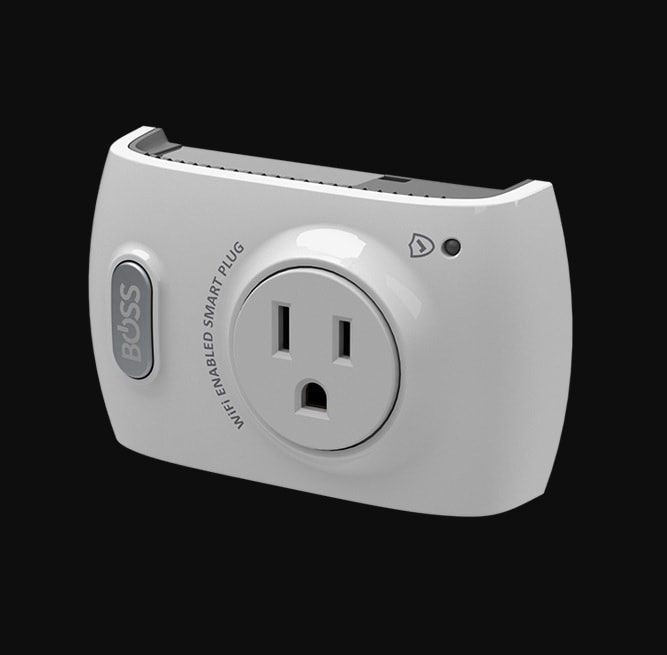In few times ahead, we may see many new wireless headphone products invading vast majority of the world headphone markets. The indication is clear. Many leading brands such as Jabra, SENNHEISER, Bose, Audio Technica, and even Beast, have boosted their new wireless headphone production. Specifically for Beast, it even uses some world most influential names in the industry such as Pharrel William, Nicki Minaj, DJ Khaled, and Dr. Dre in their wireless headphone commercials. With these, it is only a matter of time before we will completely dump all those wired head headphones along with their tangled cable problem.
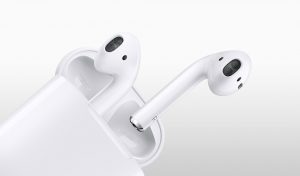
Things got a little bit hotter when non-audio manufacturer companies such as Google and Apple are joining the game. It’s still clear in our mind when Apple surprisingly released its well-known Airpods along with the release of iPhone 7 back in 2016.
The company claims that this is one of a kind with less-hassles than any other wireless headphone products in the market. User just needs to flip the charging case cover, and the device and all its advance sensors are ready to set.
On the other hand, Google also released its famous Google Earbuds. This product was aimed to be paired to Google’s new smartphone; Google Pixel 2. What’s so impressive about this product is the collaboration between Earbuds with Google Assistance.
With the presence of Google’s virtual assistance, this minimalistic wireless headphone will be able to precede various simple tasks. Making phone call, sending text message, asking direction, and others will be possible simply by giving voice commands to the device. But, the most interesting thing here is that the Earbuds can translate more than 40 languages instantly. Thanks to Google Translate for making it possible
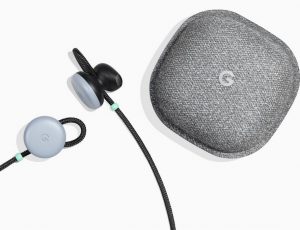
How Wireless Headphone Works
With all sophistications offered by various range of wireless headphone products, we must know that these products share the same thing, which is the operation method. Even if in some cases several manufacturers decided to use different technology in their products, but principally, the operation method is relatively the same. They all have two important elements; transmitter and receiver.
Main function of transmitter is transmitting the audio data through the air. It converts the audio signal into radio frequency, and transmits it through the air to the receiver. Transmitter can be mounted to the base unit, or what we usually called “dongle”. But mostly, transmitter is built in inside the base unit. In Bluetooth headphone for example, the transmitting job is done by Bluetooth module inside the base unit, or simply smartphone.
 Then we have receiver that is usually built in inside the headphone and battery-powered. This receiver receives the radio frequency transmitted by the transmitter. After receiving the frequency, receiver will convert it into audio signal. This signal will be played over the speaker, so that you can enjoy whatever audio file you are listening to.
Then we have receiver that is usually built in inside the headphone and battery-powered. This receiver receives the radio frequency transmitted by the transmitter. After receiving the frequency, receiver will convert it into audio signal. This signal will be played over the speaker, so that you can enjoy whatever audio file you are listening to.
Kinds of Technology Used by Wireless Headphone
With the high demand toward wireless headphone, research and development is getting boosted by manufacturer, resulting many variations of this product. The technology used is also various. Some are using Bluetooth or other low power technology, but others prefer to use high tech technology such as radio or DECT. But, for daily use, there are at least 3 kinds of technology used in wireless headphone; Infrared, Bluetooth, and Radio.
Infrared
Infrared was used in the early development of wireless headphone product. But, due to the limitations it has, this technology is far left behind compared to other wireless technology such as Bluetooth and radio. In infrared wireless headphone, the audio signal is transferred through infrared beam inside the base unit. Then, this signal will be caught by the receiver on the headphone. This is the same method we used in the traditional TV remote.
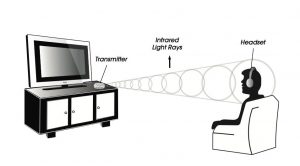
However, many people think that infrared technology is no longer relevant for nowadays use due to its limitations. First limitation is the coverage range of it. It is limited to be only around 7 meters distance. It means that you need to be within this 7 meters range from the base unit to be able to listen the audio file.
Then, the limitation comes to its basic principle. We all know that infrared is optical. By this, it means that area between the device and the base unit should be clear from any obstacles such as wall, decoration, door, etc. So the signal can be transferred well to the receiver.
Bluetooth
In the second place, we have Bluetooth technology. It may be the most common technology used in wireless headphone. We can see many Bluetooth headphones from various brands are marketed in both online and offline. They come from very low price range until high and premium price range. Better still, the also come in very handy design and various models.
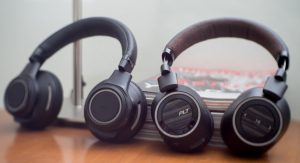
As its name, Bluetooth headphone uses Bluetooth technology to transfer audio signal. This signal will be transferred through Bluetooth frequency. Unlike Infrared, Bluetooth is not optical; this technology doesn’t require line sight. Therefore, it can penetrate through thin layer such as cotton, or thin wall. That’s why you still can use your Bluetooth headphone while slipping your phone inside the pocket.

Radio
The last technology is Radio. This may be the most advance wireless headphone technology compared to the 2 technologies mentioned before. It’s named as radio since it uses powerful radio signal to transmit the audio file. The signal used is usually FM frequency. This is the kind of frequency used by regular commercial radio stations, but it has different frequency range to avoid interference.
What’s good from this technology is that the range is so wide due to the strength that the signal has. And more interestingly, this radio signal is not interfered by any obstacles. So, you can use your radio wireless headphone to walk around while leaving the base station in the other part of the house.
Regulatory Compliance for Wireless Headphone
What’s important for wireless headphone before it’s marketed is to deal with approval needed for accessing a certain market. And if it’s needed, adjusting frequency and other aspects will be required to make sure that the product is already complied with local regulation. This is done to avoid interference between frequency used by the headphone and other outside frequency. So, the sound resulted is kept in the best level of audio quality.
In Indonesia, the approval for wireless product, including wireless headphone, is called SDPPI Type approval. This is an approval managed by Directorate General of Resources and Equipment of Post and Information Technology, under the Ministry of Communication and Informatics. To get this approval, there are many procedures needed, which are mostly about testing and paperwork. After getting through these processes and passed, the approval will be issued and products will be able to be marketed in Indonesia.
Conclusion
With the fast development of wireless, applying this technology to headphone will be very potential for the market. From the user perspective, they will get so many benefits of wireless headphone products. This product is not only used for entertainment purposes only. But, it is also used in professional world to develop business. While from the manufacturer point of view they can develop even more potential use of wireless headphone so it can bring more goods to people.

